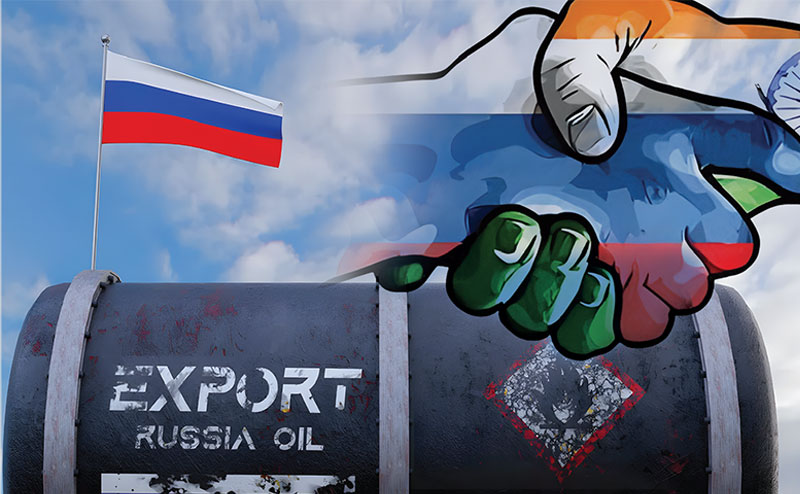Blitz Bureau
NEW DELHI: India’s decision to step up purchases of Russian crude since early 2022 has proven to be a strategic masterstroke. While drawing sharp criticism from Western capitals, the policy has helped Indian refiners save at least $12.6 billion over just 39 months, according to an Indian Express analysis of official trade data.
Russian oil cost us a lot but saved many dollars
The savings, though modest compared with earlier expectations, come at a time when global energy prices have been volatile and the country’s oil import dependency hovers around 88 per cent.
Before the Ukraine war, Russia was a marginal supplier to India’s refineries. By 2023, however, Moscow had become India’s largest oil partner, accounting for about one-third of total crude imports — nearly 1.66 million barrels per day.
This shift reduced the share of OPEC suppliers to a record low and diversified India’s energy basket. For a country seeking stability on its road to Viksit Bharat @2047, this diversification means reduced vulnerability to shocks in West Asian markets.
Discounts and savings
The most visible advantage has been the price gap. In 2022-23, Russian crude was landing in India at an average of $83.24 a barrel, roughly $13 cheaper than non-Russian grades, resulting in a saving of $4.87 billion. In 2023-24, despite a smaller discount of $8.89 per barrel, higher volumes meant even greater savings — about $5.41 billion. The 2024-25 fiscal saw discounts narrow to just 2.8 per cent, limiting relief to $1.45 billion, but the cumulative benefit across the period remained significant.
Industry experts caution that invoice-level discounts tell only part of the story. India’s large appetite for Russian oil has contributed to keeping global crude prices in check. A CLSA analysis warns that without Indian demand, oil prices could have soared to $90-$100 per barrel, compared to current levels around $65–70. In that scenario, India’s import bill between April 2022 and June 2025 would have been higher by $58-116 billion, an unbearable burden for an economy in transition.
Energy affordability is not just an economic imperative; it is a developmental necessity. Lower oil prices mean reduced pressure on India’s current account deficit, smaller subsidy outflows, and more fiscal room for investments in infrastructure, digital connectivity, healthcare, and education — the pillars of the Viksit Bharat mission. By shielding Indian households and industry from price shocks, Russian oil imports are indirectly fueling capital formation required for the 2047 vision.
While the US and its allies see India’s stance as undermining sanctions, New Delhi has argued that such imports are vital for global market stability. Indeed, Washington itself has admitted that India’s participation helps prevent runaway price spikes. This careful balancing act underlines India’s foreign policy of strategic autonomy — securing national economic goals while navigating geopolitical turbulence.



